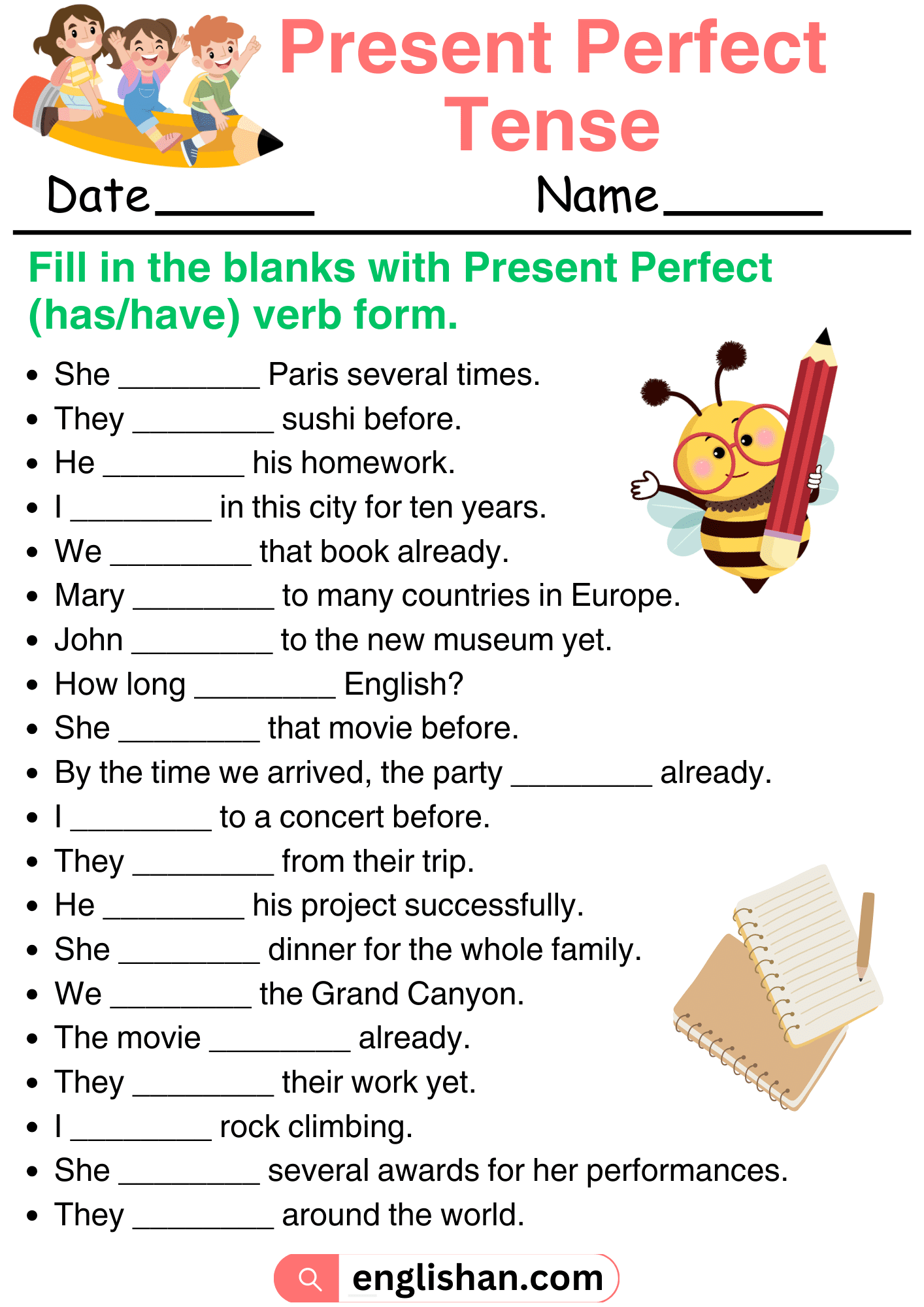
Mastering the Present Perfect Tense: The Indispensable Role of Grammar Worksheets
In the intricate tapestry of the English language, certain grammatical structures stand out for their nuanced meaning and widespread application. Among these, the Present Perfect Tense often poses a unique challenge for learners, bridging the gap between past events and their present relevance. Its versatility, however, makes it an indispensable tool for expressing experiences, durations, and recent actions. To truly grasp this complex tense, learners require not just theoretical understanding but also consistent, targeted practice. This is precisely where Grammar Worksheets: Present Perfect Tense emerge as an invaluable resource, offering a structured, systematic, and highly effective pathway to mastery.
Understanding the Present Perfect Tense: A Foundation for Worksheets
Before diving into the efficacy of worksheets, it’s crucial to solidify our understanding of the Present Perfect Tense itself. Formed with "have/has" + the past participle (V3) of the main verb, it’s not simply about what happened in the past, but rather how past events connect to the present moment. Its primary uses include:

- Experiences: Describing something that has happened (or hasn’t happened) at some unspecified time in one’s life.
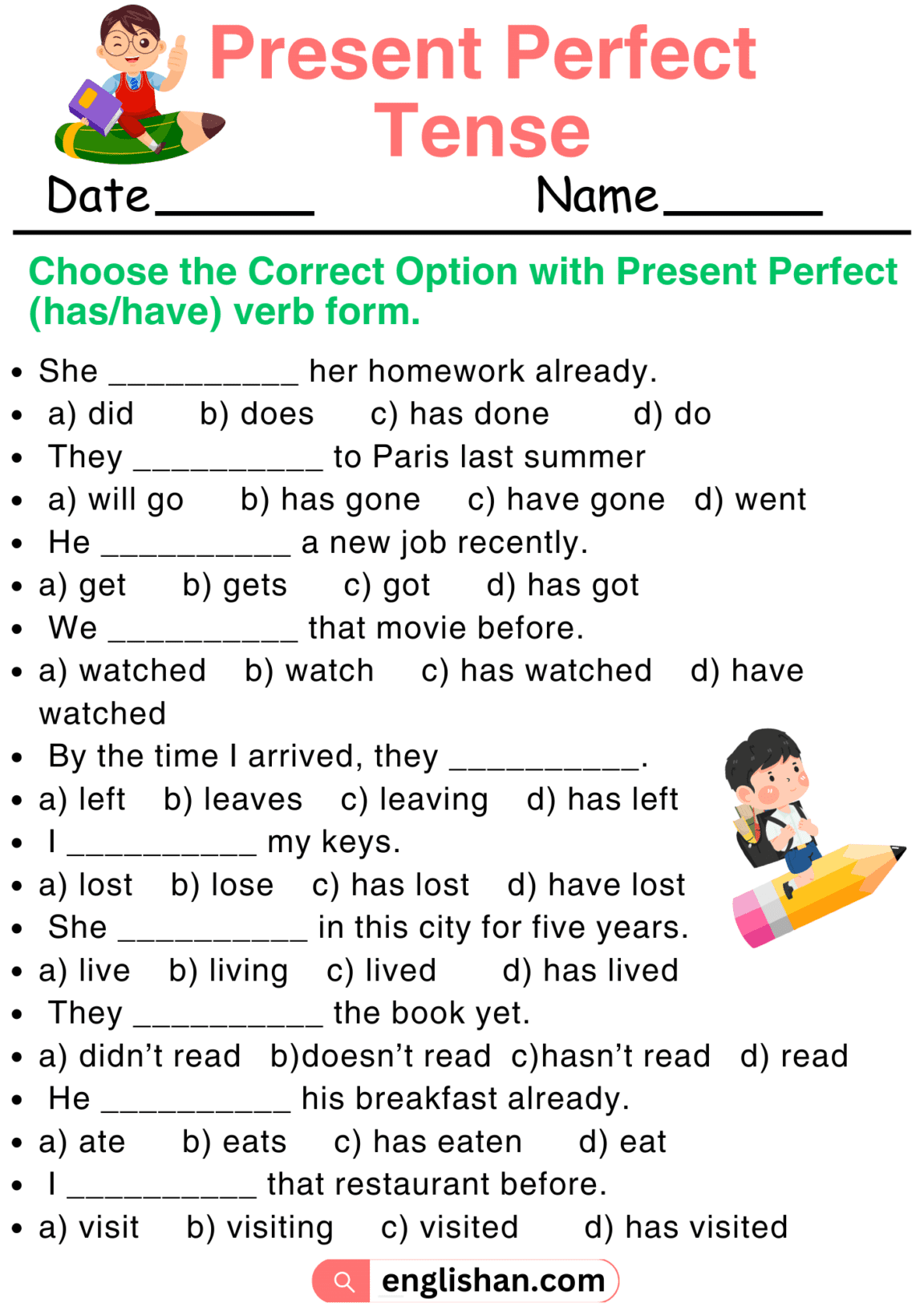
- Example: I have visited Paris three times. (The experience exists in my life up to now.)
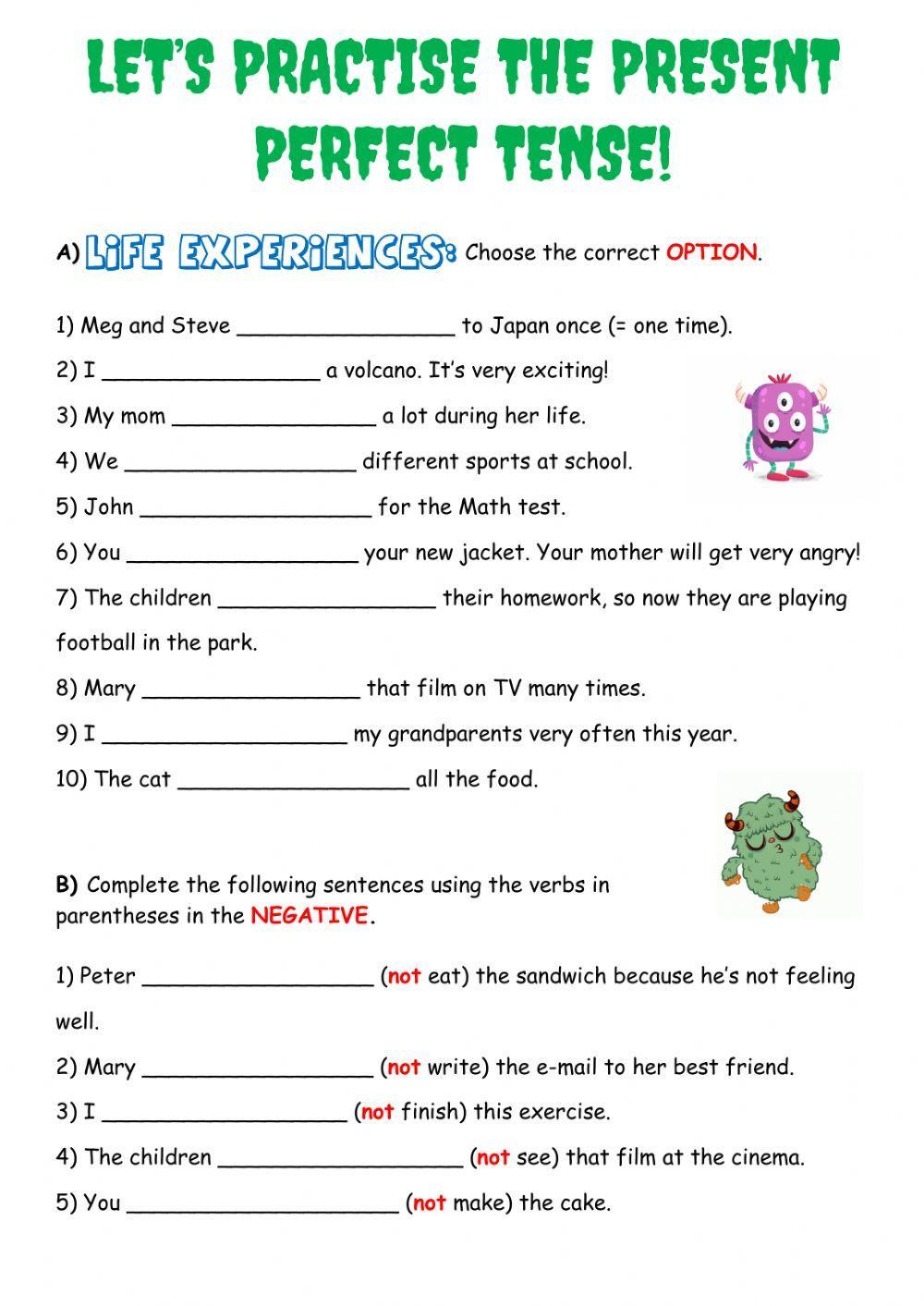

- Unfinished Actions or States: Referring to actions or states that began in the past and continue up to the present. Often used with "for" (duration) or "since" (starting point).
- Example: She has lived here for five years. (She still lives here.)
- Recent Actions with Present Results: Indicating actions that were completed very recently, and their results are visible or relevant now. Often used with "just," "already," or "yet."
- Example: He has just finished his homework. (The homework is now done, and he is free.)

- Changes Over Time: Describing how something has changed or developed over a period.
- Example: The city has grown significantly in the last decade.
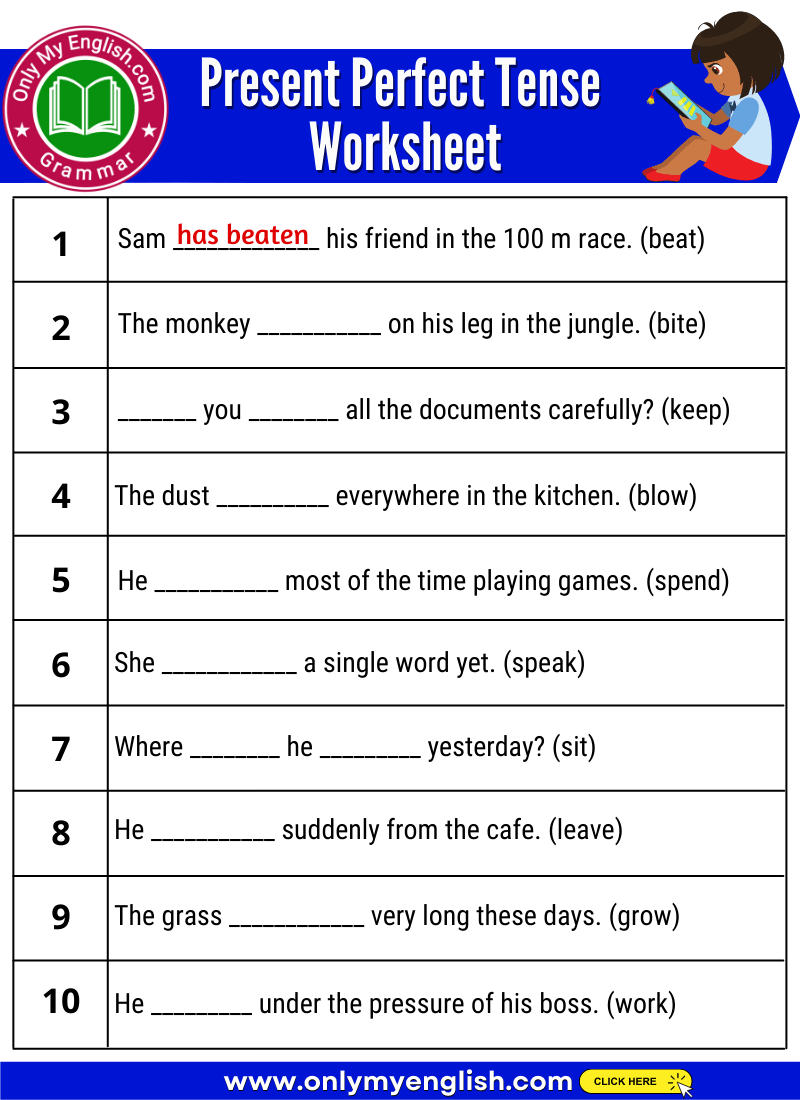

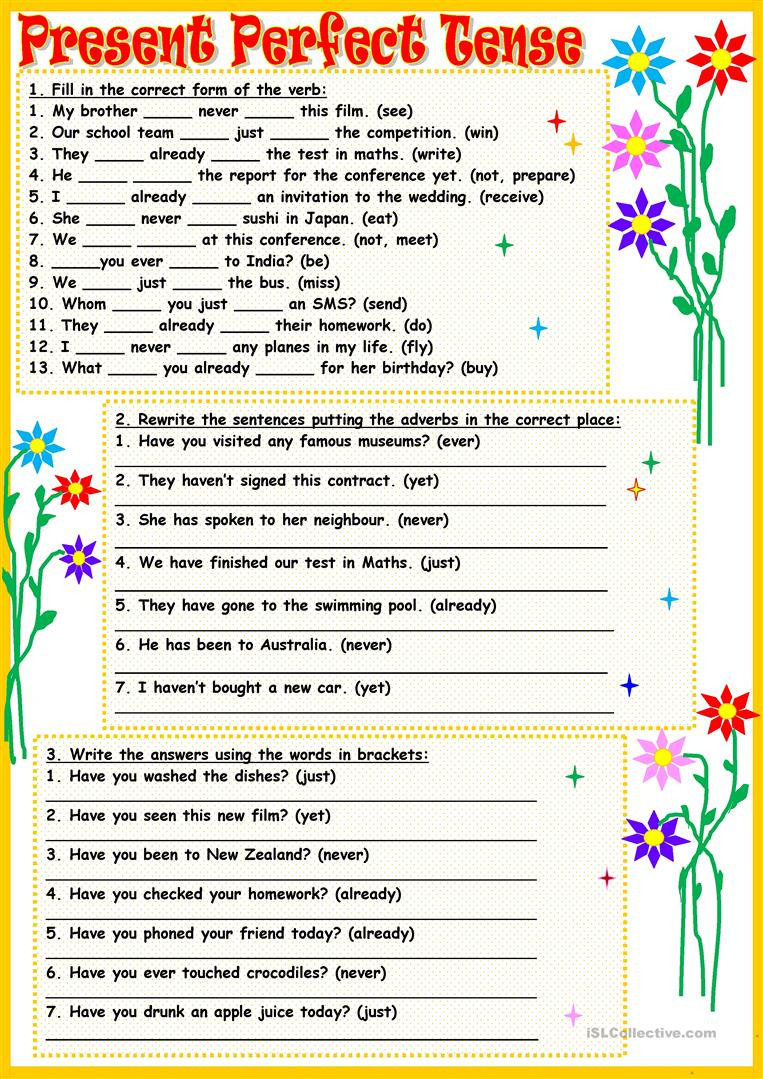

The subtleties of these uses, particularly differentiating them from the Simple Past Tense, are often the biggest hurdle for learners. This is precisely why well-designed Grammar Worksheets: Present Perfect Tense are not just helpful, but essential. They provide the repetitive exposure and contextualized practice necessary to internalize these distinctions.
The Efficacy of Grammar Worksheets: Present Perfect Tense
Enter the unsung hero of language learning: the worksheet. Specifically, Grammar Worksheets: Present Perfect Tense offer a structured and systematic approach that benefits learners of all levels. Here’s why they are so effective:
- Active Learning: Unlike passive reading or listening, worksheets demand active engagement. Learners must recall rules, apply them, and construct sentences, solidifying their understanding through doing.
- Repetition and Reinforcement: Mastery comes through consistent practice. Worksheets allow for repeated exposure to the target structure in varied contexts, reinforcing grammatical patterns and vocabulary associated with the Present Perfect.
- Immediate Feedback (with Answer Keys): When provided with an answer key, learners can immediately check their work, identify mistakes, and understand where their comprehension falters. This self-correction mechanism is crucial for independent learning.
- Structured Practice: Worksheets break down the learning process into manageable chunks. They can focus on specific aspects (e.g., "for vs. since," "ever vs. never," irregular past participles) before moving to more complex integrated exercises.
- Versatility: Worksheets are adaptable to various learning environments. They can be used in a classroom setting for group work or individual practice, assigned as homework, or utilized by self-learners for independent study.
- Tangible Progress: Completing worksheets provides a sense of accomplishment and a tangible record of progress, boosting learner confidence and motivation.
Designing Effective Grammar Worksheets: Present Perfect Tense
The quality of a worksheet directly impacts its effectiveness. A well-designed Grammar Worksheets: Present Perfect Tense should incorporate a variety of exercise types to cater to different learning styles and reinforce various aspects of the tense:
- Fill-in-the-Blanks: The most common type, where learners complete sentences by conjugating verbs into the Present Perfect.
- Example: She _____ (travel) to many countries.
- Sentence Completion/Transformation: Learners complete sentences based on prompts or transform sentences from other tenses (e.g., Simple Past) into the Present Perfect.
- Example: I started learning English five years ago and I’m still learning. -> I _____ English for five years.
- Error Correction: Identifying and correcting grammatical mistakes in sentences, which hones critical thinking and attention to detail.
- Example: I have went to the store yesterday. (Incorrect)
- Choose the Correct Option: Multiple-choice questions that force learners to differentiate between the Present Perfect and other tenses (especially Simple Past) or choose the correct adverb.
- Example: I (have eaten / ate) dinner an hour ago.
- Question Formation/Short Answers: Practicing forming questions and providing concise answers using the Present Perfect.
- Example: You / ever / eat / sushi? -> Have you ever eaten sushi? Yes, I have. / No, I haven’t.
- "For" vs. "Since" Practice: Dedicated exercises to distinguish between these two crucial time markers.
- Example: He has worked here 2010. / They have been married ten years.
- Open-Ended Questions/Personalized Responses: Encouraging learners to use the Present Perfect in a meaningful, personal context, which bridges the gap between mechanical practice and real-world application.
- Example: What is something new you have learned recently?
- Contextualized Paragraphs/Dialogues: Reading comprehension exercises where learners identify or use the Present Perfect within a larger narrative, promoting understanding of its natural usage.
Beyond exercise types, clear instructions, a logical progression from simpler to more complex tasks, and an appealing layout contribute significantly to the overall effectiveness of the worksheet. Providing an answer key is paramount for self-study and efficient classroom correction.
Implementing Grammar Worksheets: Present Perfect Tense in Learning Environments
For educators, deploying well-crafted Grammar Worksheets: Present Perfect Tense in the classroom can transform abstract rules into practical skills. They can be used for:
- Pre-teaching/Introduction: To gauge prior knowledge or introduce the basic form before in-depth explanation.
- Guided Practice: Working through exercises together, clarifying doubts, and discussing answers.
- Independent Practice: Allowing students to work at their own pace, reinforcing concepts.
- Assessment: As quick quizzes or part of larger tests to evaluate comprehension.
- Differentiation: Providing varied levels of difficulty to cater to diverse student needs.
For self-learners, Grammar Worksheets: Present Perfect Tense become their private tutor. The key to success lies in discipline and self-correction. Learners should:
- Understand the Rules First: Don’t just jump into exercises without a basic grasp of the tense’s function.
- Work Systematically: Start with simpler exercises and gradually move to more complex ones.
- Use the Answer Key Wisely: Check answers only after attempting the entire exercise, then analyze mistakes to understand the underlying rule.
- Repeat Challenging Sections: If a particular concept is difficult, find more exercises focusing on that area.
- Integrate with Other Skills: After practicing with worksheets, try to apply the Present Perfect in speaking and writing.
Common Challenges and Troubleshooting with Worksheets
Even with excellent worksheets, learners might encounter specific challenges related to the Present Perfect Tense. Worksheets can be designed to specifically address these:
- Confusion with Simple Past: This is perhaps the most common hurdle. Worksheets should include exercises that explicitly contrast the two tenses, providing scenarios where one is appropriate and the other is not. For example, exercises requiring learners to choose between "I went to the party yesterday" and "I have been to that party before."
- Irregular Past Participles: Many verbs have irregular past participle forms (e.g., go-went-gone, see-saw-seen). Worksheets can include dedicated sections for memorizing these, perhaps through matching exercises or fill-in-the-blanks focusing only on irregular verbs.
- Placement of Adverbs: Adverbs like "just," "already," "yet," "ever," and "never" have specific placements within the Present Perfect structure. Exercises can focus on correct adverb placement (e.g., "She has already finished" vs. "She already has finished").
- Contextual Understanding: Sometimes, learners understand the form but struggle with when to use the tense. Worksheets with mini-dialogues or short stories where the Present Perfect naturally occurs can help build this contextual understanding.
By systematically engaging with carefully constructed Grammar Worksheets: Present Perfect Tense, learners can build a robust foundation, identify their specific weaknesses, and systematically work towards overcoming them.
Beyond Worksheets: Integrating Practice for Holistic Mastery
While Grammar Worksheets: Present Perfect Tense are foundational, they are part of a larger ecosystem of language learning. True mastery comes from integrating this grammatical knowledge into all four language skills:
- Speaking: Encourage learners to use the Present Perfect when talking about their experiences, recent news, or ongoing situations. Role-plays, interviews (e.g., "Have you ever…?"), and discussions about personal history are excellent avenues.
- Writing: Assign writing tasks that necessitate the use of the Present Perfect, such as personal essays about life experiences, summaries of recent events, or even short stories that unfold over time.
- Listening: Expose learners to authentic materials (podcasts, videos, songs) where the Present Perfect is frequently used. Encourage them to identify and analyze its usage.
- Reading: Provide texts that are rich in Present Perfect examples, prompting learners to notice patterns and contextual clues.
Worksheets serve as the crucial stepping stone, ensuring accuracy and fluency in the structure before learners venture into more spontaneous and creative language production.
Conclusion
The journey to mastering the Present Perfect Tense is multifaceted, but one of its most reliable companions is the well-designed worksheet. Grammar Worksheets: Present Perfect Tense are far more than mere drills; they are structured learning tools that facilitate active engagement, provide essential repetition, offer immediate feedback, and build confidence. By understanding the nuances of the Present Perfect and leveraging the power of varied, targeted exercises, learners can transform a challenging grammatical concept into a fluent, natural part of their English communication. Whether in the bustling classroom or the quiet space of self-study, these worksheets remain an indispensable resource, paving the way for confident and accurate use of one of English’s most dynamic tenses.
